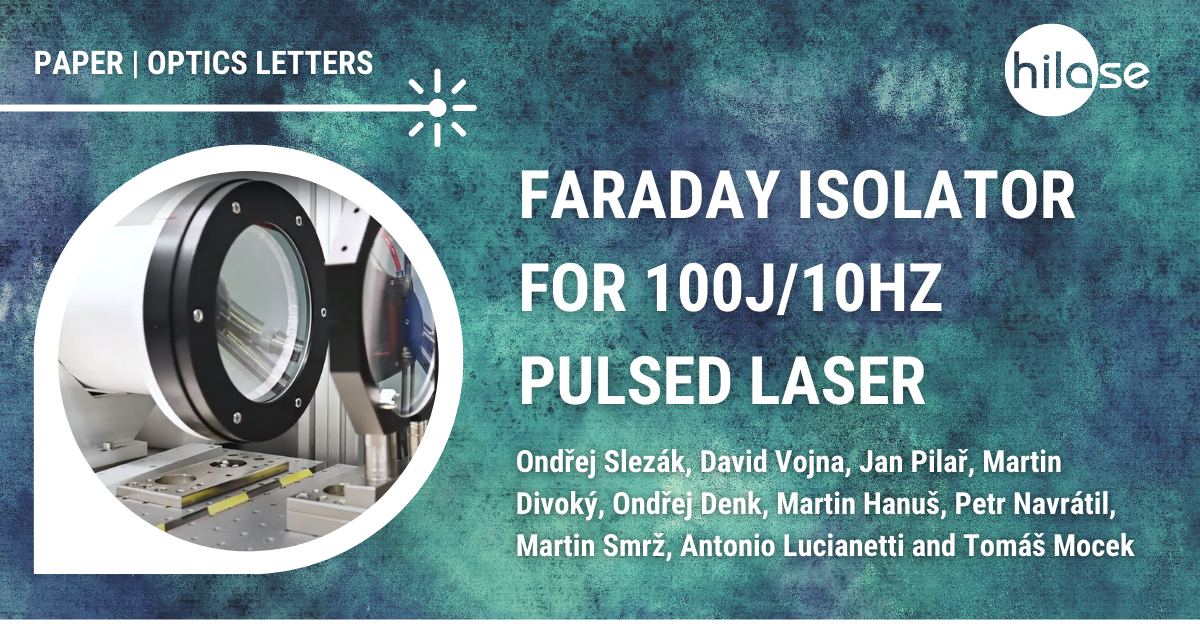We are proud to announce that the team of the HiLASE Centre has just published a paper entitled “Faraday isolator for 100J/10Hz pulsed laser” in the Optics Letters journal. In the article, the authors Ondřej Slezák, David Vojna, Jan Pilař, Martin Divoký, Ondřej Denk, Martin Hanuš, Petr Navrátil, Martin Smrž, Antonio Lucianetti and Tomáš Mocek report on the first-ever demonstration of the optical isolation of a kilowatt average power large aperture high energy pulsed laser! The story behind this article is as follows.

The recent dynamic development in the field of high average power pulsed lasers started the hunt for various optical components and devices capable of functionality in such powerful laser beams. These lasers are aiming at the application areas spreading from advanced material processing, laser shock peening or laser induced damage threshold testing. The usage of lasers for the applications always brings the risk of unwanted back reflections coming back from the experimental area to the power amplifier chain. These back-reflections may cause undesirable interferences, disturb the laser operation or, in the worst-case scenario, severely damage the optical components. Therefore, it is vitally important to protect the laser with a nonreciprocal device – the optical isolator.
A Faraday isolator (optical isolator based on the Faraday effect) capable of reliable protection of the laser amplifier chain delivering 100 J nanosecond laser pulses at the repetition rate of 10 Hz has been developed and successfully tested in the HiLASE Centre. The isolator provided an isolation ratio of 30.46 dB in the course of an hour-long testing run at full power without any noticeable decrease due to the thermal effects. This is the first-ever demonstration of a nonreciprocal optical device operated with such a powerful large aperture high-energy, high-repetition-rate laser beam, opening the possibilities for this type of lasers to be used for a number of industrial and scientific applications, which would be too risky to perform without the optical isolation.
Read the FULL ARTICLE.









